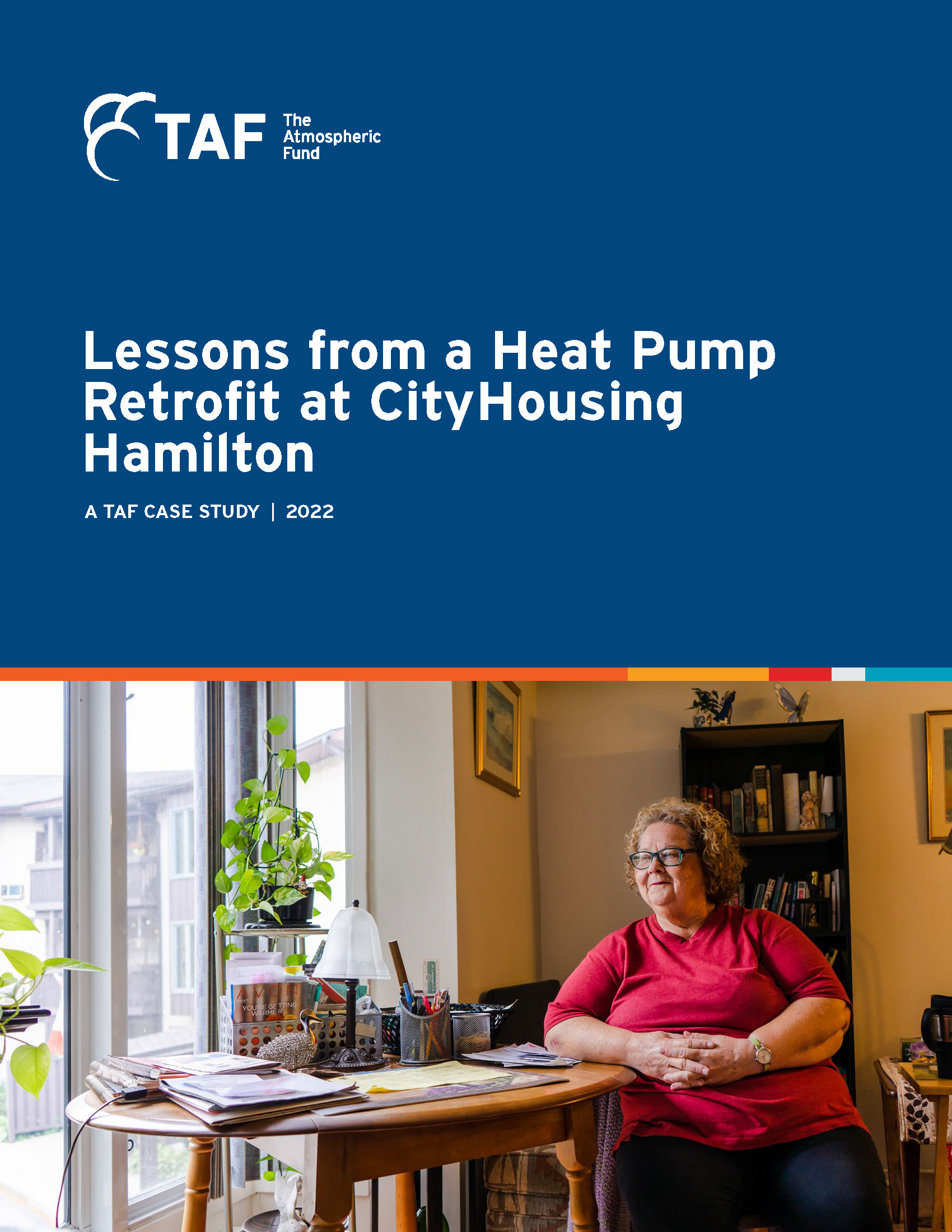May 2022. Government of Ontario. TAF collaborated with CityHousing Hamilton to plan and implement a pilot project at a three-storey multi-family residential building with 40 units. We installed a heat recovery, variable refrigerant flow (VRF) air source heat pump (ASHP) system in three suites to test the performance of the technology under real-world conditions and to provide best practice recommendations. Results will guide potential scale up within this building and other multi-family buildings in Ontario. This case study provides results, lessons learned, and recommendations.
Key Outcomes
- Comfort was improved by providing residents with year-round control of indoor temperatures.
- Efficient summertime cooling improved comfort and mitigated effects of extreme heating events.
- Heat pump system met the demands of heating and cooling, even when temperatures reached -25°C.
- Our analysis found no energy savings due to an oversized system, which caused system short-cycling during heating and cooling seasons.
Lessons Learned
- Matching heat pump capacity to the capacity of existing heating systems can result in extreme oversizing and poor performance. We recommend that engineers and installers optimize system sizing and balancing to avoid heat pump cycling and savings shortfalls.
- Pre-retrofit monitoring can help with system sizing. Analyzing consumption of select suites and understanding resident behaviour can add important context to the design process and will provide a check on engineering heat loss calculations.
- We recommend that building owners perform startup and optimization commissioning to ensure performance of heat pump systems.
- There is an industry capacity gap related to designing and implementing heat recovery heat pump systems. For this particular project a lack of local industry experience created difficulty in obtaining contractor bids, which slowed down the process of system and contractor selection. We recommend more funding and training to support workforce capacity-building.

